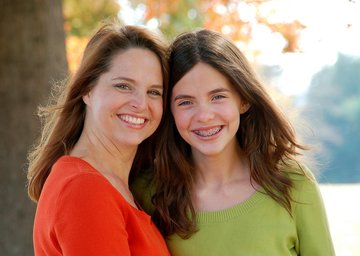 My daughter and I when she was in 6th grade. My daughter and I when she was in 6th grade. In my newest book No One Needed to Know, my main character, Heidi, is 11-years-old and in 6th grade. The premise of this book – an adolescent girl becomes aware that her older brother is Autistic, what that means and how that affects her, is based loosely on my personal experience. I do have an older brother with developmental challenges, and I wasn’t fully aware of his differences until I hit 11 or 12 years old. While this book touches on some real life feelings and moments of my life, it is a work of fiction. One of the challenges I faced when writing the novel was that some of the memories I have with my brother are in situations that might not necessarily exist today. I was in 6th grade in 1981. The editing and revisions of this novel were done in 2014 when my daughter had just finished 6th grade. Also, I grew up in the perfect planned community of Irvine, in southern California. My daughter is growing up in a suburban sprawl in the country outside Nashville, Tennessee. These make for some pretty big differences. My mother suggested I should just set the story in the early 80s, but I felt there were enough issues going on in the book to not also make it a historical novel. I felt it needed to be current and relevant to kids today. The solution was to blend my past with my daughter’s present. In some cases this was tricky. Here are a few examples of how the world has changed. 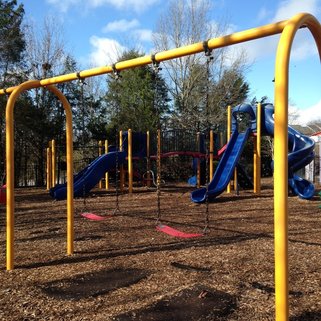 Pretty typical modern playground near my home. Pretty typical modern playground near my home. SAFETY My brothers (I have two actually) and I grew up when playgrounds were terrifyingly fun. I mean, I grew up in the age of spinning merry-go-rounds and teeter-totters that went fifteen feet in the air. There was a two-seat swing in the Kindergarten playground at my school with no straps that easily could swing six feet high or more and was made of aluminum. The park nearest my house was almost entirely cement, sculpted to look like giant sea creatures surrounding a sunken ship. My oldest brother had to get stitches one time after banging his chin hard on a squid’s tentacle. I know there were dozens of broken bones from neighborhood children over the years, thus explaining why the playground no longer exists. In No One Needed to Know, Donald and Heidi frequent a park that has a giant ship in a sandbox next to an alien-ship-looking-structure full of tunnels. This was a real place too. I went on Facebook to discuss it, and my old friends have very foggy memories of it (one friend who lived near the park informed me that what I thought was a spaceship was supposed to have been a volcano). Most of these parks are gone. My daughter grew up going to bright playgrounds with plastic slides and soft groundcover or mulch underneath. To me, they are fun for climbing and sliding, but not great for imagination. To rectify that a park like the one Heidi loves exists but is unusual, I had her lament the loss of the good playgrounds: 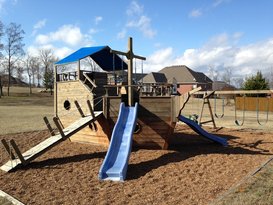 Sadly, no one had a picture of the playground (because we didn't take selfies of us playing back then). This is the closest thing I could find that's similar, behind a church in my neighborhood. Sadly, no one had a picture of the playground (because we didn't take selfies of us playing back then). This is the closest thing I could find that's similar, behind a church in my neighborhood. This park, the only one of its kind left, had a life-sized boat stuck in a sandbox to look like a shipwreck. It was full of places to hide and climb—and probably spiders. I tried not to think about that too much when I played on it. Right next to it was this bizarre cement structure with tunnels to creep through. It looked like a flying saucer. Both were great for playing make-believe. The orange and blue “big toys” were not good at all for that kind of playing. Occasionally they might have a steering wheel randomly hitched to a protective railing, but what fun was that? Were we kids supposed to think we were driving a funky jungle gym through space? Driving it through the ocean? Because this was the only park worth my time, I planned my weekends around playing there. It was a long bike ride from home. We had to take this bike path that connected three different subdivisions, pass by two different elementary schools, and cross a bridge that went over the train tracks to get there. So a considerable chunk of a Saturday afternoon had to be spent just getting there and back again. 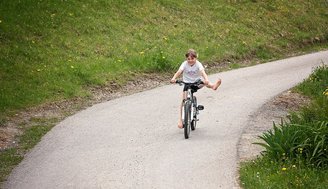 No helmet. Not even shoes. Welcome to 1981! No helmet. Not even shoes. Welcome to 1981! FREEDOM And how did we get to the crazy, dangerous playgrounds? We rode our bikes. We stayed out all day and we went far from home. Irvine was full of bike paths and bike lanes. This crazy park was out behind my middle school, where I rode my bike to and from most school days. It was (and still is) a very bike-friendly place. I don’t know if kids still ride their bikes much. Even if they do, I sincerely doubt mothers are allowing their 11-year-old daughters and special needs children to ride their bikes 5 to 10 miles (or more) from home, unchaperoned, like we did. There are no bike lanes or paths anywhere near where I live now, and the traffic is too congested to brave riding without them. To take a good bike ride, you have pack your bikes in your car and take them to designated trails. Yeah. So, my daughter hasn’t actually learned how to ride a bike (she’ll hate me for writing that). Walking or riding to any of her schools would be flat-out dangerous. Kids today get picked up from school by their parents or take the bus. Few walk or ride home on their own anymore. Parents stick close by on outings. I didn’t even let my daughter walk unaccompanied at the mall with her friends until she was in 7th grade. I still stayed at the mall to be available, just not with her the whole time. And speaking of the mall. Heidi and Donald have a few scenes where they are at the shopping center, without parents. One of the biggest scenes in the book is Heidi being followed and taunted by bullies while alone in the shopping center. Well, as in most children’s books, I couldn’t have the action taking place if Mom was nearby. Bullies would not bully in the presence of a parent. Donald is 16, but he’s much younger developmentally. I had to explain their bike and shopping center freedom by describing the layout of their neighborhood: 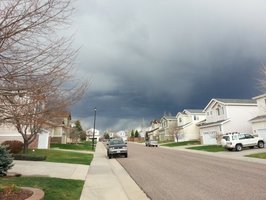 When the park got too crowded, the two of us would head to the shopping center to get hamburgers before going home. Our house was in a subdivision set off the main road in town. Basically, it was a few blocks from our house to get to that street. We only had to cross through one light to get to the shopping center, so all the kids in my neighborhood biked or walked there. My mom was always telling me how our town kept growing bigger and bigger on the outside, but this little part in the middle stayed the same. That’s why my parents bought a house there, not far from the house where my mom grew up. She liked the safety and convenience of it all. I always liked having everything so close, too, because we had a lot more freedom in our neighborhood than kids in other areas. My mom felt pretty secure about letting us wander around without her, as long as we checked in regularly by phone. 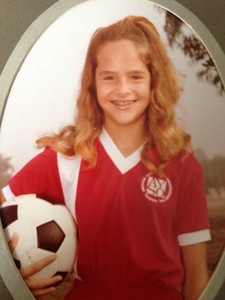 6th grade me. I was terrible at soccer. Terrible. Heidi, however, is great at it. 6th grade me. I was terrible at soccer. Terrible. Heidi, however, is great at it. TECH Oh, did you catch that part about the phone? That’s an obvious change from then and now. Cell phones. We didn’t have them. So, we’d ride our bikes far from home and play at life-threatening playgrounds. What happened if we got hurt? We’d ride home bloody. That’s how it went. Now kids can call for help. And the mom that’s sitting on a bench in the park or at the food court in the mall can come running. Kids have their own phones. Some even as young as nine or ten. I gave my daughter her first cell phone when she turned 11, right before 6th grade, because she’d be riding the bus home instead of staying at after school care. I was behind the curve, for most of her friends had them already. I gave her a smart phone in 8th grade when the peer pressure was wearing me down too. Kids now have computers, internet, infinite television/movie choices, and amazing video games. There is no reason to go outside. Ever. But I wanted Heidi to be an outdoorsy girl. I made her athletic, good at soccer, and just the kind of kid who’d rather be on the move than sitting still. When I was in 6th grade we didn’t have a lot of choices in video games. Just Atari or going to the arcade. I wasn’t into it at all. My oldest brother struggled with video games. In a scene where Heidi is trying to make her brother act his age, she encourages him to do more things 16-year-old boys do: “Right now your room looks like it belongs to someone my age or younger. Since you’re sixteen and not ten, it’s time to get your room updated.” I reached up and took down several posters and pennants. “Tomorrow we’ll go to the store and buy you some rock music posters. Got any favorite bands?” “No.” “Then we’ll listen to a bunch of music on the Internet until you find one or two. Would you like a poster of a supermodel in a bathing suit or a calendar of them? It’s kind of a gross thing that most teenage boys have.” “I guess that’s okay.” “Good.” I went to the shelves and pulled off several of the most poorly made airplanes and put them on Donald’s lap. “Next we’ll get you some new hobbies. Hmmm. Maybe a book or two would be nice. We could get you some games like chess or checkers. Let’s think about some video games too.” “Too fast for me,” Donald said. I wasn’t sure whether he meant the video games or my whirlwind approach to changing his lifestyle. “You’ll learn,” I replied. DATING My editor questioned me about the ‘date’ that happens in this book. He wasn’t sure kids Heidi’s age would be on a date. Fact is, that part hasn’t changed as much as you’d think. In the summer between 5th and 6th grade, I dated a boy named Kirk. Unlike the jerky Kirk in my book, this Kirk was sweet and gentle. We spent a lot of time at the park near his house. (Another horrifying place we all loved with a metal slide coming out of a tall wooden tower four stories high.) One time we rode our bikes unaccompanied to the movies to see The Muppet Movie. Yep. The first one. I broke up with him to date Greg, a popular boy at school who was into me. So cliché. And dumb. Thankfully, Kirk and I eventually became friends again. In fact, he was one of my best friends in high school, sang at my wedding, and is still a good friend to this day. I remember an afternoon with Greg, a friend of his and that guy’s girlfriend having kissing contests to see who could hold a kiss longest. I’m not talking anything sexy. These were literally pressing lips together and counting. So lame, right? My daughter had a boyfriend briefly in 5th grade. I let her go to the movies with him once, but I sat in the back of the theater. She didn’t have another relationship until 8th grade and that didn’t go anywhere. Her friends, though. Goodness. This is an area where, strangely, parents haven’t decided to be overprotective. A lot of kids she knew in 6th grade were dating frequently, unchaperoned, and several claimed to have performed some kind of sexual act before graduating junior high. For the sake of No One Needed to Know, I kept dating in the story old-fashioned and clean. Kirk and I decided to ride our bikes and meet at the movie theater in the shopping center so that we wouldn’t have to get our parents involved. This way neither of our parents knew it was a “date,” and no one would be given a hard time about it. My parents were used to me going out to play with boys, and Kirk’s parents thought he was out with Tom. We met half an hour before the movie, giving us plenty of time to buy popcorn and change our minds about which movie we wanted to see. We each planned to buy our own boxes so we wouldn’t have to touch buttery fingers. It would just be too distracting. It was only a first date, after all. 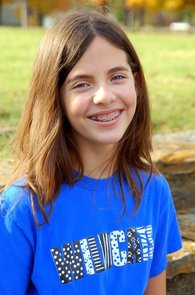 My 6th grade daughter proudly wearing her middle school t-shirt. My 6th grade daughter proudly wearing her middle school t-shirt. IS 6TH GRADE ELEMENTARY OR MIDDLE SCHOOL? For me, 6th grade was the top class of elementary school. Junior high or middle school was 7-8th. Here in Tennessee most 6th grades are in middle school. The school district around Nashville has middle school starting in 5th grade. Too young, I say! It was important to me that the kids in No One Needed to Know were at the top of the hierarchy and not at the bottom. I needed them to feel like they were in control of everything happening. They had to be cocky. When 6th graders are at the bottom of the heap, they aren’t as free with their opinions and behaviors. They don’t want to get picked on. I also didn’t want Heidi to have older friends in school available to help her out. I did consider making Heidi a 5th grader, but that was pushing it for the freedom and dating situations I needed her to be in. I didn’t think anyone would buy a modern day 10-year-old gallivanting around town on her bicycle or going on an unchaperoned date. Or dating at all, for that matter. One year does make a difference. I did some research and discovered there are still some schools in the U. S. that have 6th grade in elementary school. Due to school overcrowding, it is rare, but it does happen. Cathy and I could finally start our visit with each other. We talked about which teachers we hated the most and what it was going to be like when we finally got to start junior high. “My cousin is in sixth grade and is already in middle school,” Cathy told me. “I’m so jealous.” “I don’t know,” I commented. “I kind of like being in elementary school one extra year. Junior high seems scary. Everyone’s so tall.” 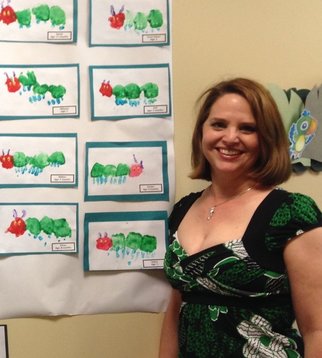 I have been an educator with special needs students since 1991. For the past 11 1/2 years I've worked specifically in Early Intervention. I have been an educator with special needs students since 1991. For the past 11 1/2 years I've worked specifically in Early Intervention. SPECIAL EDUCATION Speaking of school… My oldest brother graduated from high school in 1984. The Diagnostic and Statistical Manual of Mental Disorders (DSM) didn’t give a definition for Autism until 1987. It wasn’t included as a Special Education category until 1991. That was the year I graduated from college – 10 years after the life moment in which my story takes place. My mom had been a teaching assistant in a Special Education preschool, and after I graduated college I began working with her and then eventually moved to a private school for Special Ed up in Los Angeles. Over time, my mother and I learned about what Autism was, and we unofficially concluded that my brother was on the Spectrum. He is not “slow” or “brain damaged” like the teachers had proclaimed when he was in school. Nor is he “retarded” like all the kids taunted back in the day. Nowadays, we have better Special Education. We have better Early Intervention. We have more knowledge. In 6th grade my daughter volunteered to work in the SEEK program at her school where kids assist special needs students. I think kids today are more familiar with the terms Autism, Down Syndrome, and Developmentally Disabled. They are more tolerant than they used to be, although it can still be better. There is an active effort in schools to stop using the “r-word” as an insult. It still happens, and it will always give me the shivers. It is my hope that my novel No One Needed to Know will be part of improving sensitivity toward kids who have learning challenges and are differently abled. “Ms. Anderson?” I bit my lip and then blurted it out. “I know you can’t talk about the other kids in your program, but can you tell me about Donald? He’s my brother and all, and I would love to know more about why he’s, you know, the way he is.” Ms. Anderson sat down with me by the concession stand and took the time to explain to me how Donald had a combination of disabilities. She said he was on the higher end of the Autism Spectrum. Along with that he had poor eyesight and Attention Deficit Hyperactivity Disorder. That made him, in simple terms, slow to understand things and mature. “Do my parents know all this about him?” “Yes. We have meetings a couple times a year to discuss how he’s doing and make goals for him.” I focused on the group around my brother’s bowling match. My mom and dad sat at a table behind them, cheering for him like he was a five-year-old in a T-ball game. “Why have my parents never told me about his condition?” Ms. Anderson gave a tiny shrug and offered, “I couldn’t say. Perhaps they didn’t think you were ready to hear it?” All those times I got in trouble for yelling or making fun of Donald, doing mean things like locking him out of the house or just being impatient with him—I hadn’t exactly been proving myself to be very mature. No wonder my parents thought I wasn’t old enough to handle this kind of information. I was grateful that Ms. Anderson was giving me this chance to understand. If you’re interested in learning more about No One Needed to Know, visit my page about it. You can order a print copy from Amazon for the purposely low price of $6.99 today.
I hope you enjoyed this little walk down memory lane with me. I’d love to know some things that existed in your childhood that are different now. Feel free to comment below. Comments are closed.
|
D. G. DriverAward-winning author of books for teen and tween readers. Learn more about her and her writing at www.dgdriver.com Archives
July 2024
Categories
All
|
Author D. G. Driver's
Write and Rewrite Blog
“There are no bad stories, just ones that haven’t found their right words yet.”
A blog mostly about the process of revision with occasional guest posts, book reviews, and posts related to my books.
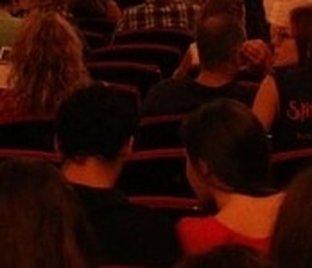
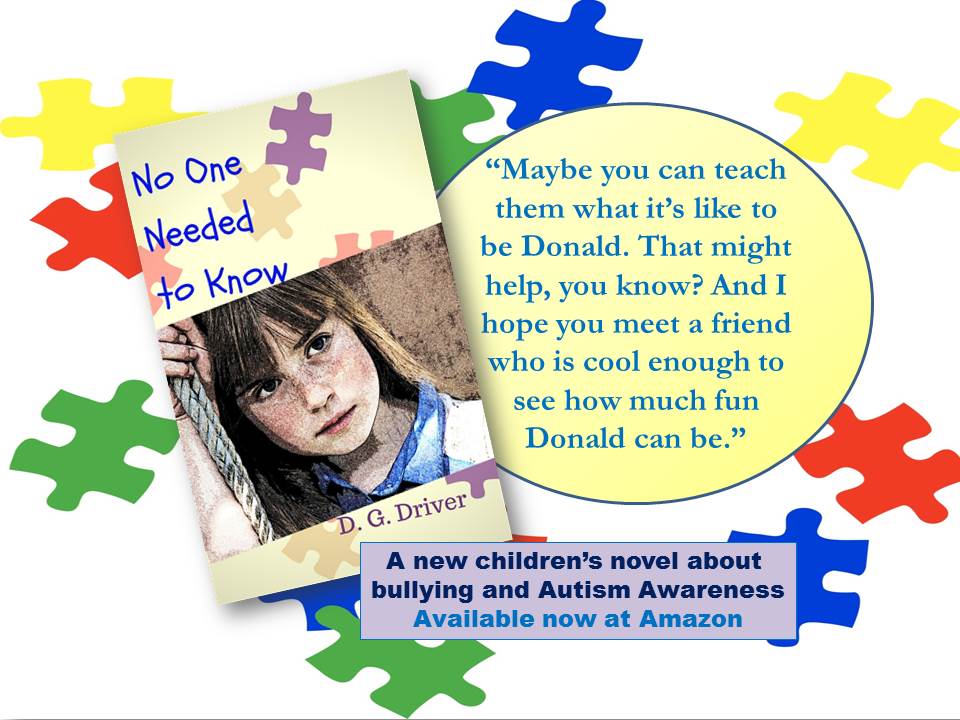
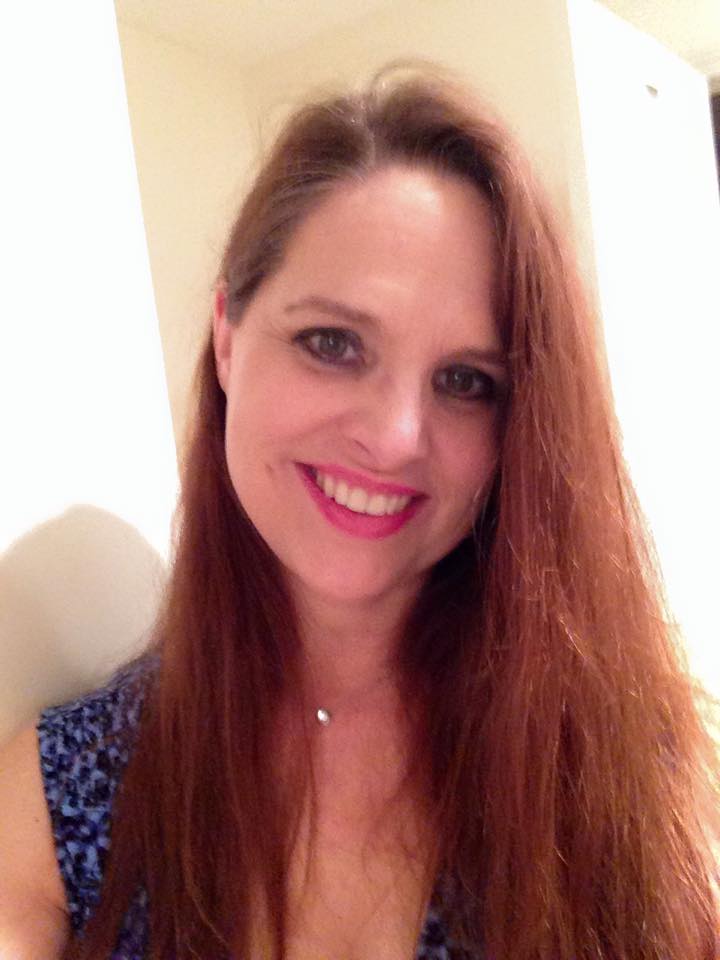
 RSS Feed
RSS Feed